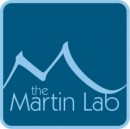Protein aggregation has been implicated in numerous diseases as well as in vital cellular processes in organisms ranging from bacteria to humans. Proteins can form aggregates via differing mechanisms according to the folding state of the monomeric building block of the aggregate, which can include native-like structures or alternate stable states. Gamma-crystallins are a family of structural proteins that maintain the refractive index gradient of the eye lens, and aggregation of these proteins results in cataract formation. Several point mutations in the primary amino acid sequence of the structural crystallins can result in cataract formation. The Martin Lab is currently investigating the kinetics of aggregation for this protein system, with the ultimate goal of understanding how mutations in the primary sequence can affect aggregation propensity. To achieve this goal, a wide range of biophysical techniques are used for characterization of the protein aggregates, including fluorescence and turbidity assays, dynamic light scattering, x-ray diffraction, and transmission electron microscopy.
